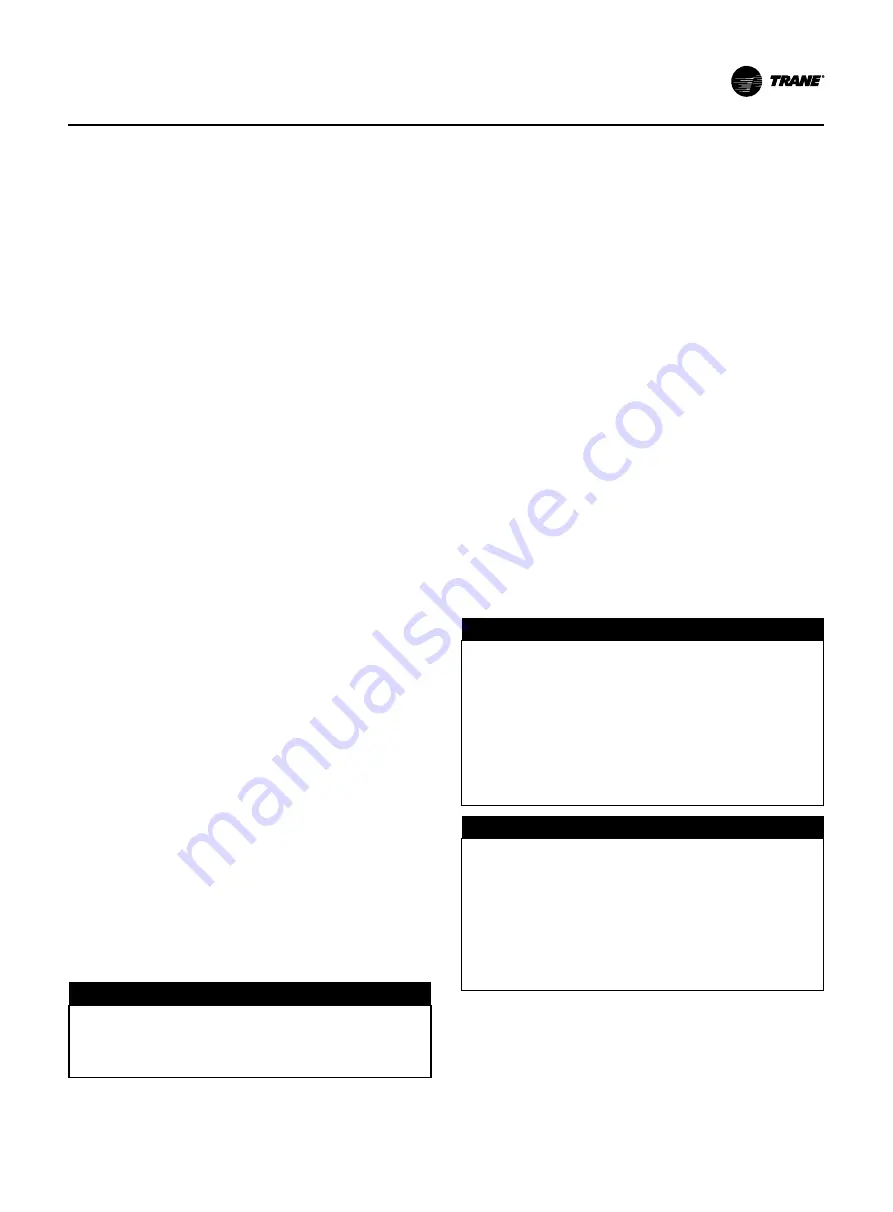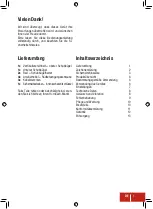
vent-line length in equivalent feet is the sum of
the linear pipe length plus the equivalent length
of the fittings (e.g., elbows).
Vent-Line Installation
When constructing the rupture disc vent line, be sure to
consult local codes for applicable guidelines and con-
straints.
All CenTraVac centrifugal chillers are equipped with
carbon rupture discs. A cross-section of the rupture disc
assembly appears in
along with an
illustration indicating the location of the rupture disc
on the suction elbow. If refrigerant pressure within the
evaporator exceeds 15 psig the rupture disc breaks and
shell pressure is relieved as refrigerant escapes from the
chiller.
Several general recommendations for rupture disc vent
line installation are outlined below.
1. Verify that the vacuum support side of the rupture
disc is positioned as shown in the cross- section view
that appears in
Note:
If the rupture disc was removed for any reason, it
must be reinstalled (as shown in
) using
the following installation procedure:and contact
CenTraVac Technical Service when reinstalling the
rupture disk.
a. Install the two bottom bolts though the pipe
flanges.
b. Install the rupture disc with a gasket on each side
between the pipe flanges. Orient the disc with the
reference arrow or vacuum support bar facing the
chiller side per
c. Install the two top bolts.
d. Center the disc and gaskets to the flange bore.
e. Hand tighten all bolts assuring equal pressure.
f. Use a torque wrench set to 240 in·lb (27 Nm) with
a 9/16” (14 mm) socket.
g. Tighten bolts in a star pattern, one half turn each,
to maintain even pressure on the disc.
h. Final torque on all bolts should be 240 in·lb (27
Nm).
2. When attaching the vent-line to the chiller, do not
apply threading torque to the outside pipe of the
rupture disc assembly.
D
NOTICE
Rupture Disc Damage!
Do not apply threading torque to the outside pipe.
Failure to follow this recommendation could result in
damage to the rupture disc assembly.
3. Provide support as needed for the vent-line. Do not
use the rupture disc assembly to support the vent-
line piping.
4. Use a flexible connection between the vent-line and
the rupture disc assembly to avoid placing stress on
the rupture disc. (Stress can alter rupture pressure
and cause the disc to break prematurely.) The flexible
connector used to isolate the rupture disc from ex-
cessive vent-line vibration must be compatible with
the refrigerant in use. Use a flexible, steel connector
such as the stainless-steel type MFP, style HNE, flex-
ible pump connector (from Vibration Mounting and
Control, Inc.) or equivalent. See
for
a recommended relief piping arrangement.
5. An individual vent-line is normally installed for each
relief device. It is permissible to manifold the rupture
discs of several machines into a common vent-line
provided that the appropriate ASHRAE Standards
and local code requirements for manifolded relief
devices are followed.
Note:
does not apply for manifold-
ed vent-lines.
6. Route the vent-line piping so that it discharges out-
doors in an area that will not spray refrigerant on
anyone. Position the vent-line discharge at least 15 ft
(4.57 m) above grade level and at least 20 ft (6.1 m)
from any building opening. Provide a vent-line termi-
nation that cannot be blocked by debris or accumu-
late rainwater.
D
CAUTION!
Pressure-Relief Device Discharge
Hazard!
When a pressure-relief device operates, it could dis-
charge a large amount of fluid and/or vapor. An im-
proper vent-line termination could result in personal
injury and/or property-only damage.
Units MUST be equipped with a vent-line termina-
tion that discharges outdoors in an area that will not
spray refrigerant on anyone.
D
NOTICE
Proper Refrigerant Vent Line
Termination!
Improperly terminating a refrigerant vent line could
allow rain to enter the line. Accumulated rainwater
could cause the relief device to malfunction; or, in the
case of a rupture disc, the rainwater pressure could
cause the disc to rupture, allowing water to enter
the chiller. Failure to properly terminate a refrigerant
vent line could result in equipment damage.
7. Provide a drip leg on the vent-line (see
). Provide a standard 1/4” FL x 1/4” NPT, capped
refrigerant service valve to facilitate liquid removal.
RELEASED 10/Mar/2020 06:59:20 GMT
















































